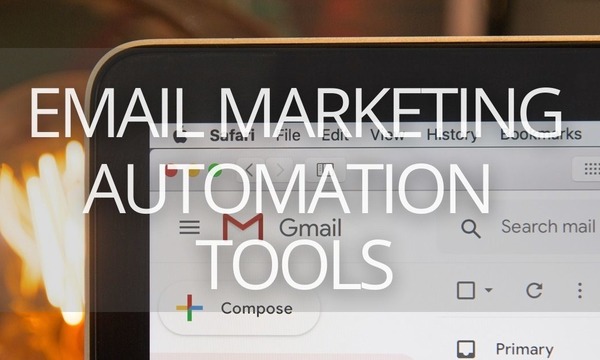Introduction to the PPC retail future
In today’s fast-paced digital marketing environment, PPC ads remain a dominant force, especially for retailers. Effective PPC goes beyond simple ad buys and requires a sophisticated approach. To succeed, you must use smart technologies, understand customer behavior in detail, and develop inventive, data-backed strategies. Whether you’re a seasoned PPC professional or new to e-commerce advertising, keeping abreast of the latest PPC trends is crucial for maximizing ROI.
This guide will help you navigate the complexities of modern PPC and succeed in the ever-changing world of online retail advertising. We’ll provide you with the knowledge and insights necessary to excel in today’s competitive PPC market. We’ll equip you with the tools and strategies to adapt to new trends, leverage emerging technologies, and maintain a competitive edge.
Biggest trends in PPC for retail
Google’s AI and machine learning innovations are transforming retail PPC. These advancements are enabling greater automation in campaign management, facilitating more accurate targeting, and creating personalized ad experiences. Retailers use AI to optimize bids instantly, forecast consumer actions, and customize ad copy for each shopper, leading to higher conversion rates and improved ROI. To stay competitive, you must evolve your PPC strategies to fully use these AI-driven features.
Increased use of AI and machine learning
While AI broadly refers to machines mimicking human intelligence, machine learning represents a specific branch: training systems to learn from data autonomously, without explicit instructions. This distinction is vital, especially in PPC advertising, where comprehending how machines learn and adapt directly impacts campaign success. This year, AI transcends its status as a trend and evolves into “Smart AI” – more focused, data-driven, and advanced systems. This evolution signifies a major step forward in AI development and deployment, paving the way for more impactful and streamlined solutions across industries.
AI in ad targeting
AI is transforming PPC ads into a precision-driven machine. By analyzing big data, AI uncovers hidden patterns in consumer behavior and search trends. This allows algorithms to pinpoint the keywords, demographics, and online actions that signal purchase intent. Armed with these insights, AI anticipates buying patterns, enabling hyper-targeted ad delivery. For retail PPC, this means connecting with genuinely interested customers, boosting click-through and conversion rates, and improving ROI.
Machine learning in real-time optimization
Machine learning is transforming retail advertising, providing always-on optimization for campaign success. These algorithms automatically refine bids, manage budgets, and identify hidden data patterns, ensuring ads target the most relevant audience. This ongoing refinement maximizes ad efficiency and ensures adaptability to dynamic market conditions.
For retail digital marketers, a strong understanding of machine learning isn’t just beneficial – it’s crucial. Moving beyond basic tool usage to a deeper comprehension of how these technologies function allows for strategic application, dramatically improving PPC campaign performance and delivering superior outcomes.
Top PPC strategies for retail
 Photo by Hamed Taha on Unsplash
Photo by Hamed Taha on Unsplash
Here are 4 essential PPC strategies for retail digital marketers:
1. Try Demand Gen campaigns
The automatic upgrade from Discovery Ads to Demand Gen campaigns in Google Ads represents a notable advancement for digital advertisers. More than just a name change, Demand Gen offers a strategic evolution aimed at capturing a larger share of social media ad spending. Initial performance data reveals that Demand Gen campaigns are outperforming their Discovery Ads counterparts, delivering improved traffic quality, increased conversions, and ultimately, greater potential for business growth. This upgrade promises a more powerful and efficient platform for connecting with target audiences and achieving impactful results.
2. Embrace automation and smart bidding with Performance Max
To thrive in today’s fast-paced PPC ecosystem, automation is key. Google’s Performance Max leverages this by intelligently optimizing ad placements across multiple channels, ensuring your message reaches the ideal customer at the perfect moment. Complementing this, Google’s innovative Demand Gen ad formats are transforming customer engagement. These visually rich and captivating ads capture attention early in the buying process. Strategically using Performance Max in conjunction with these advanced Demand Gen formats allows advertisers to maximize visibility while creating meaningful and lasting connections with their target audience, ultimately driving better results.
3. Experiment with AI
The digital marketing area is undergoing a rapid AI-driven revolution, impacting even product feed optimization. Cutting-edge tools like FeedGen are harnessing the capabilities of Google Cloud’s Large Language Models, including Bard, to change how businesses handle their product data. FeedGen empowers marketers to refine product titles, descriptions, and attributes using AI, providing a valuable platform to experiment and integrate AI into broader marketing strategies. This leads to more impactful product listings that boost visibility, engagement, and sales.
4. Explore ecommerce on diverse platforms with cross-channel and omnichannel strategies
Relying exclusively on Google Shopping in today’s digital world limits your PPC potential. To thrive in retail, diversify your advertising strategy by leveraging platforms like TikTok, Facebook, and Instagram. Each offers unique audiences and engagement methods, from TikTok’s short videos to Facebook’s targeted ads and Instagram’s visual campaigns.
Integrating these platforms with existing channels creates a holistic PPC approach optimized for retail success. This strategy acknowledges modern consumer behavior, ensuring you connect with customers where they are with relevant content. By strategically incorporating these platforms into your PPC campaigns, you’ll enhance your marketing, maintain a competitive advantage, and succeed in the evolving retail landscape.
Common challenges and solutions in PPC for retail
Let’s look at common PPC issues retail advertisers face and how to solve them.
Challenge 1: Ad saturation and viewer fatigue
The constant flood of digital advertising has made the retail market exceptionally competitive. Consumers are overwhelmed by the sheer number of ads across multiple channels, making it harder for retailers to capture their attention and connect with them meaningfully. This overexposure often leads to ad fatigue and “banner blindness,” reducing the impact of even the most sophisticated campaigns. Successfully navigating this crowded digital space demands innovative marketing strategies and a keen awareness of evolving consumer preferences.
Solutions:
- Create unique, engaging content that answers potential customer queries, positioning your brand as a solution at the top of the funnel. Focus on being helpful and informative.
- Try dynamic ad formats and personalization to tailor your messages to better engage with your audience. Personalization can help cut through the clutter.
- Experiment and test to see what resonates best with your audience. Keep your content fresh and interesting.
- Apply the 80/20 rule, which means dedicating the majority of your content to education and engagement rather than direct sales.
- Be consistent with content creation so that regular updates and new content keep your audience interested and engaged.
- Monitor and adapt based on metrics to understand what’s working. Analyze click-through rates, conversion rates, and engagement levels. Double down on strategies and content types that are showing success. A data-driven approach allows you to continually refine your tactics and do more of what works best.
By combining these strategies, you can more effectively combat ad overload and viewer fatigue, making your PPC campaigns more effective, engaging, and relevant to your target audience.
Challenge 2: Balancing automation and human insight
While algorithms excel at spotting trends and automating tasks, they often miss the deeper insights a human digital marketer possesses. A human expert can detect subtle changes in user behavior, competitor strategies, and overall market trends that automation might not recognize, leading to more customized and impactful campaign modifications. This human element is essential for maintaining brand consistency, developing innovative strategies, and ultimately, driving superior ROI compared to a purely automated approach.
Solutions:
- Think of AI and automation as assistants, not replacements. Use automation tools for efficiency but keep control over strategic decisions.
- Regularly review the performance of your campaigns with a critical eye. Remember that Google Ads’ automatic application settings may not always match your unique goals.
Your role is to manage these tools, make manual adjustments, and give your campaigns the strategic depth that only human expertise can provide.
Challenge 3: Measuring and attributing ROI accurately
Measuring ROI of PPC campaigns is difficult in today’s complex marketing environment. Customers rarely follow a straightforward path to purchase, making it challenging to isolate the impact of individual PPC ads. They typically interact with multiple channels – from PPC ads and organic search to social media and email – before converting. To assess ROI, it’s essential to understand how each touchpoint contributes to the customer journey. This requires advanced tracking technology and sophisticated attribution models to properly weigh the influence of each interaction.
Solution:
For businesses navigating the complexities of data analysis and user privacy, investing in advanced analytics tools like Google Analytics 4 is a smart strategy. GA4 prioritizes privacy through features like default IP anonymization and region-specific controls for features like Google Signals, allowing for flexible adaptation to various privacy regulations. Businesses can also designate events as non-personalized ads, ensuring responsible data handling. Beyond these foundational elements, GA4 offers tools like shorter data retention periods and precise data deletion capabilities, including the ability to remove individual user data upon request, strengthening compliance with data protection laws.
Utilizing GA4’s privacy-first design not only improves regulatory adherence but also provides valuable insights into attribution models. By more effectively tracking the customer journey, marketers can accurately attribute conversions to specific campaigns. In essence, GA4 empowers businesses to make data-driven decisions while prioritizing user privacy and building trust – a critical advantage in today’s digital world.
Challenge 4: Keeping up with rapid technological changes
The speed at which PPC tools and algorithms evolve demands significant time and resources to stay updated on new features, bidding strategies, and platform changes – resources that many small businesses lack. This constant need to adapt requires continuous training, experimentation, and potentially expensive new software, pulling resources away from essential business operations. The pressure to quickly adjust to algorithm updates, often without adequate notice or clear instruction, can result in ineffective campaigns and put small businesses at a disadvantage compared to larger competitors with dedicated marketing teams.
Solution:
Engage in relevant online communities to participate in discussions, exchange ideas, and learn from others’ experiences. Leverage webinars and online conferences to gain access to expert insights and data-driven strategies. Consider partnering with digital marketing specialists or agencies to acquire specialized knowledge and implement innovative techniques. Investing in continuous learning ensures your strategies remain adaptable and effective in the ever-changing digital landscape.
Challenge 5: Navigating privacy regulations and data restrictions
Today’s retailers navigate a tricky landscape: they must deliver targeted and engaging advertising while complying with ever-tightening privacy laws such as GDPR and CCPA. The impending loss of third-party cookies, a long-relied-upon tool for online advertising, adds another layer of complexity. The future of personalized advertising depends on innovative approaches that balance consumer privacy with effective marketing. Google’s recent pause in the complete third-party cookie deprecation underscores the challenging nature of this shift and the industry’s continued pursuit of workable replacements.
Solution:
To navigate complex and changing privacy regulations, businesses must adopt tools like Google Consent Mode and comprehensive consent management platforms. Moving towards contextual advertising and making the most of first-party data allows brands to deliver personalized experiences while safeguarding user privacy. Investing in privacy-focused technology and ethical data handling is crucial, not only for legal compliance but also for building audience trust and ensuring the sustainable success of advertising efforts in a privacy-aware environment.
Conclusion
Retail PPC campaigns demand a careful balance of technology and human ingenuity to thrive. Tools like Google’s Performance Max and AI improve ad performance. Standing out from the competition means crafting resonant, informative content, personalizing messaging, and deploying engaging ad formats to build lasting customer relationships based on trust and value. To stay competitive, retailers must continuously analyze data, gather customer feedback, and adapt their strategies, embracing innovation while retaining the human touch that defines their brand. Those who successfully combine cutting-edge tools with experienced professionals and a dedication to customer value will ultimately succeed.




